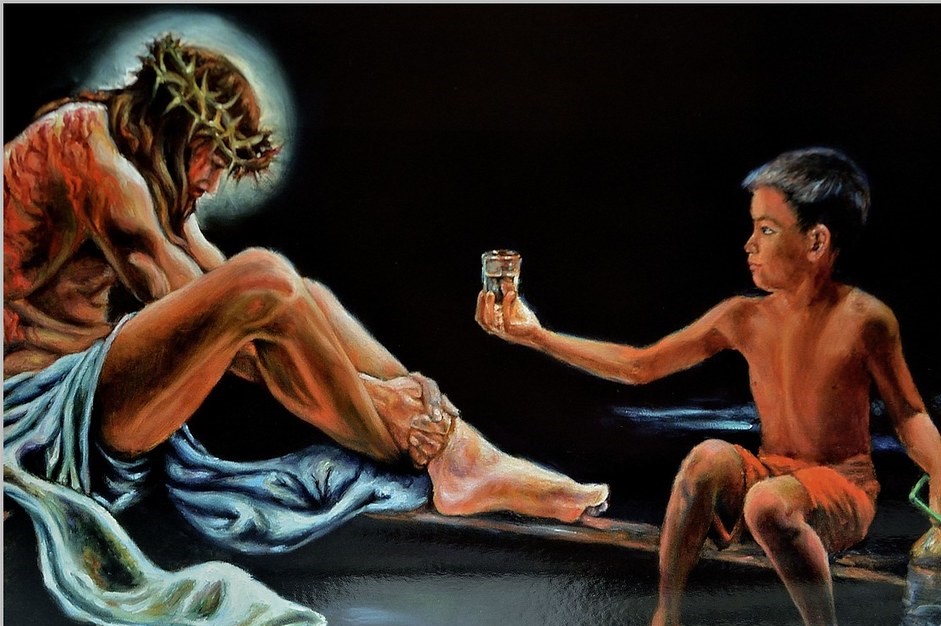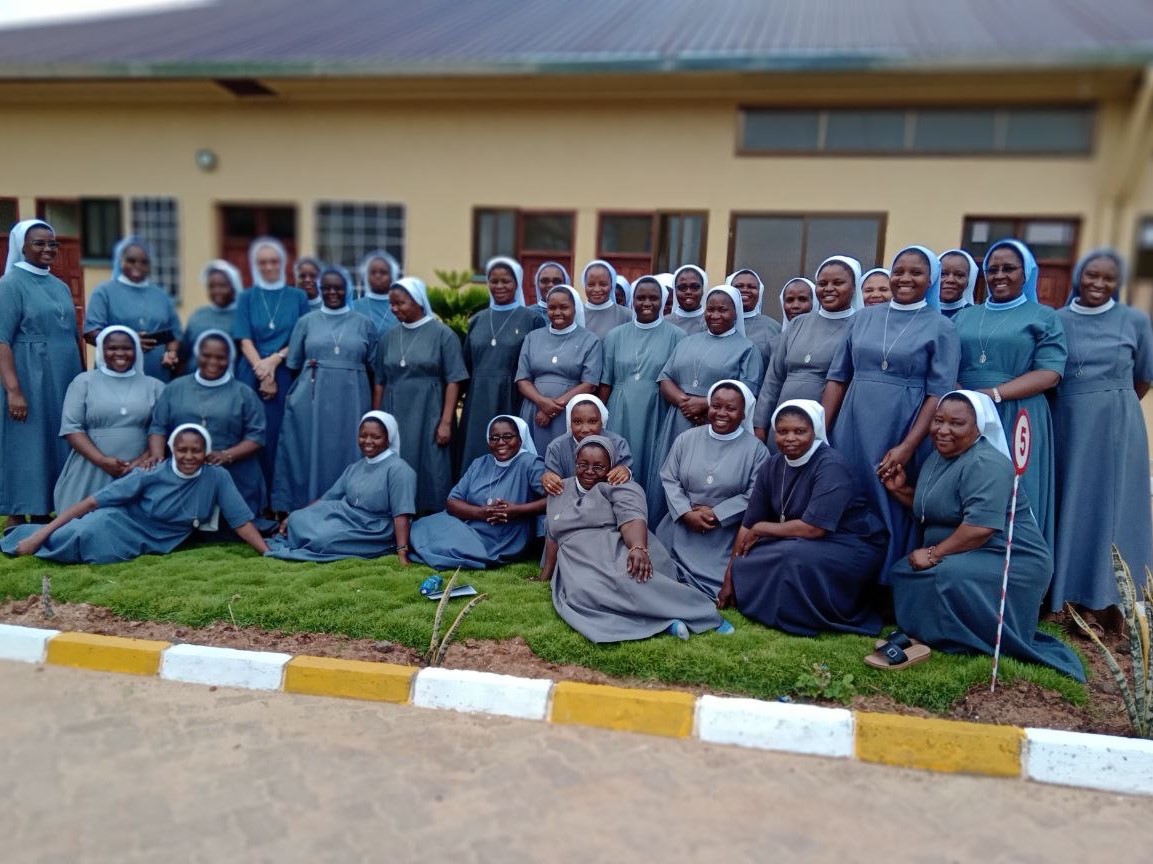
Jan 17, 2022 | HISTORY, NEWS
Decision to do missionary work
At the General Chapter of 1963, the Polish sisters suggested that the missionary idea be given more prominence in the congregation. The topic was discussed in detail and offers from Africa and Brazil had already been received. However, the sisters were warned from various quarters against hasty deployment in an unfamiliar culture and pointed out the importance of good training and preparation. For the time being, therefore, they only included the missionary concern in the new version of the constitutions. They did not see this as a new field of work, but wanted to continue the original task of their founder, to take care of women and girls as well as people in need in the mission. The next general chapter in 1969 took up this concern again and made the decision to send sisters to Africa.
Tanzania
Three years later, sisters from the three Polish provinces began missionary work in Tanzania. The first station in Kilimarondo, which opened in 1972 and closed again after almost 20 years, was followed by two more in Nanjota and Chikukwe, which still exist today. In 1990 the congregation opened a novitiate, from which 15 African professed sisters emerged by 1998. In 1988, it obtained state registration, which enabled it to own the land and houses of its branches in Nanjota and Chikukwe.
Dioceses
The branches of the Sisters of Mary Immaculate were in different dioceses. When they were founded, the first two stations in Kilimarondo and Nanjota belonged to the Nachingwea diocese, of which the Salvatorian Father Arnold Cotey was bishop. In February 1984, Polykarp Pengo became the first local bishop to take over the Nachingwea diocese. He was ordained bishop on January 6, 1984 in St. Peter’s Basilica by Pope John Paul II. During his stay in Rome he also visited the Generalate and asked for more Sisters of Mary to be sent to Tanzania. He pointed out that the problem of young women in Africa was a burning one.
In the mid-1980s, the dioceses in Tanzania were reorganized, and the Nachingwea diocese was dissolved. Kilimarondo now belonged to the diocese of Lindi, led by Bishop Maurus Libaba and since 1991 Bishop Bruno Ngonyani. Nanjota and Chikukwe belonged to the diocese of Tunduru-Masasi, which Bishop Pengo took over. In 1992 Pengo became Archbishop of Dar es Salaam and in 1998 Cardinal. Since 1992, Bishop Magnus Mwalunyungu had been the new head of his former diocese of Tunduru-Masasi.
Regional superiors
In order to represent the common concerns of the branches in Tanzania vis-à-vis the church and state authorities and to maintain contact with the general administration in Rome, a regional superior was required.
On December 8, 1990, Sister M. Viannea Parchatko was appointed Regional Superior. On July 1, 1997, after returning to Poland, Sister M. Vianneya Rogowska took over this position.
(Johannes Mertens, “Geschichte der Kongregation der Marienschwestern von der Unbefleckten Empfängnis“, Volume 2, pp. 622-624)

Jan 17, 2022 | POSITIVE IMPULSES
The dynamic of the force of doing good is that it works when you respond immediately. If you wait to respond the force of doing good loses its dynamic nature. So, when you have the inspiration to do good, do it immediately. Waiting to do good will be a permanent waiting. Actually, by responding to do good, we are not doing a favor to someone else, rather it’s a favor to yourselves: you make yourself part of the beautiful things happening in this world.
Don Giorgio

Jan 13, 2022 | NEWS
One day, Sr. Małgorzata Cur from the Congregation of the Sisters of Mary Immaculate from Brzezie called me.
She expressed her desire for a picture of the handmaid of God, Sr. Dulcissima, to be created, because only a few photos are preserved, and only on some of them Sr. Dulcissima is in her monastic habit. The photos were of very poor quality, but I figured I had painted various portraits so many times that I wouldn’t have a problem with that either. I know that preparing a portrait of saints or blessed is a deep, spiritual adventure and an invitation to an exceptional friendship. Painting is also a spiritual journey into oneself. This was also the case with the work on the portraits of Saint Teresa of the Child Jesus, Blessed Cardinal Stefan Wyszyński or Blessed Chiara Luce Badano.
Together with Małgorzata, we chose one photo, which was supposed to be a model for painting the portrait.
As always, I started my work by making a drawing, a sketch that I had to stick to when painting.
However, problems have already started here. The photo showed a dozen of sisters standing in one shot and despite the large magnification, it was very blurry … The faces were illegible and even blurry … the religious habits were visible only in the general outline.
I was wondering how to work on something like this? After all, it’s impossible to take a portrait of the person I see in a fog. I did not want to be discouraged at the very beginning, I tried to continue drawing … In the meantime, Sister Małgorzata sent me pictures of sisters in religious habit from those times, so that I could better see the details of the veil, habit and their elements …
However, my priority was the eyes. It’s just that the eyes were in the shadow in the photo and in addition all the photos were of course black and white … I started to get nervous …
At the beginning of my contact with my sister, it seemed to me that it was a problem to make another portrait, now I had a problem, and a serious one. The work went on, but it was very slow and not very effective. I rescued myself with other photos of Sister Dulcissima, taken before she entered the congregation. Some of Helena Hoffmann’s photos were a bit clearer and the eyes could be seen better. However, I know that the gaze changes with human maturity, especially spiritual … and with suffering that ennobles the soul. After all, the eyes are the mirror of the soul. I wanted to get to know God’s handmaid better. It was a turning point. I started reading materials about Sister Dulcissima and … I asked her to let me paint herself and to help me with that …
The portrait was almost ready … I took two steps back and … I was sad to see that the nun I painted is not Helena Hoffmann, she is not Sister Maria Dulcissima … I was helpless …
What was there to be done?
Desperate, I asked Sister Małgorzata to pray.
The sisters prayed and even ordered a mass. for the personal painter Sr. Dulcissima – that’s what Sr. Małgorzata called me.
Personal?
It was the first time that I had tears of emotion … I felt that I was undergoing some inner cleansing and that Sr. Dulcissima became very close to me …
I started working on the face of God’s servant all over again. Then I had an impression, which turned into such a conviction that all the time Sister Dulcissima kept her hand on mine and helped me paint herself.
It was an experience I had never had before. It was liberating from the artist’s own ego, who first and foremost trusts in his artistic abilities … and here we had to trust the intercession of the one whose beatification process is underway …
I painted the canvas white and made a sketch with a brush again … It was a brave and risky move … but it paid off … The canvas was very vivid, although it is only a sketch of a portrait of Dulcissima’s sister. And it is surprising that already in this sketch – the eyes appeared alive! I breathed a sigh of relief and gratitude.
The work was progressing smoothly …
The portrait was completed just before Christmas.
This experience helped me understand how powerful the intercession of the saints is, especially in times that are humanly hopeless. Sr. Maria Dulcissima helped me paint herself and I feel honored by this fact. She is not only a candidate for altars, whom I am asking for various intentions but she is also a holy companion of ordinary and extraordinary matters in which I adore the Love of God for us, expressed every day in many ways. Sister Dulcissima – please pray for us!
Tomasz Wachowicz
Trzcianka, 02/01/2022

Jan 13, 2022 | SPIRITUALITY
This year in our Congregation we celebrate the 50th anniversary of our mission in Tanzania. May this prayer unite us in celebrating together.
O God the Father, we your children come before you with a heart of humility and great gratitude, you who are the source of all goodness and glory, we always give back to you those who are the giver and giver of various gifts. Dear Father, in this year of our 50th jubilee, we thank you and ask that your blessings continue to be with us and specially to live the Spirit of our Founder faithfully: as our motto guides us. LIVING IN LOVE AND UNITY, O God the Father Almighty through the intercession of our Mother Virgin Mary who is the steward of our congregation, may she be our eternal refuge. Amen.

Jan 2, 2022 | POSITIVE IMPULSES
It’s important to underline the divine element in us, because that is what will be there always. Giving adequate importance to this aspect of our life completes our being. The more we can bring the spotlight on our spiritual life, the more we can widen our horizons. Often, we find ourselves trapped because of the absence of the liberty of our heart. The liberty of our heart comes from the liberty you bring to your soul by your spiritual life.
Don Giorgio





